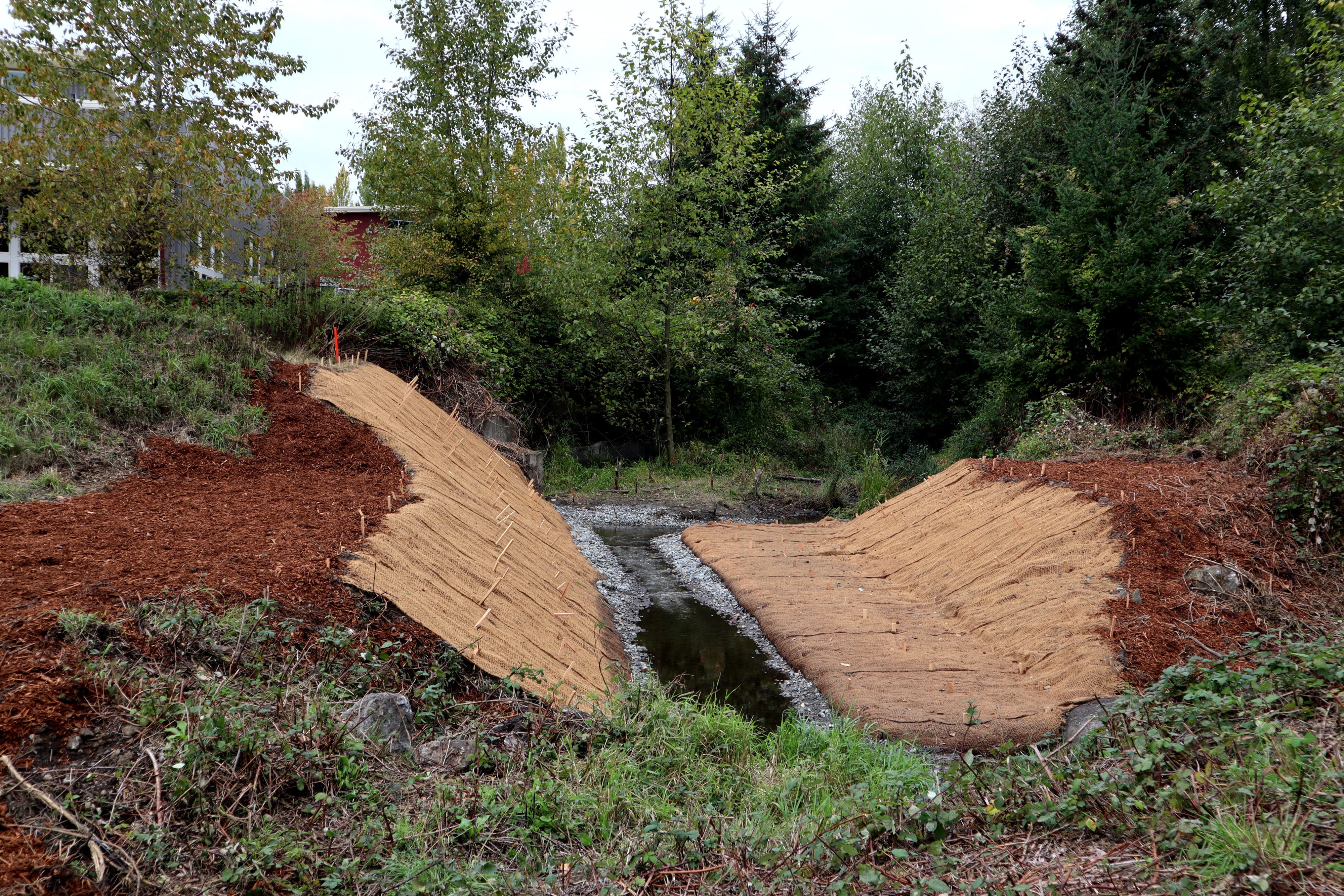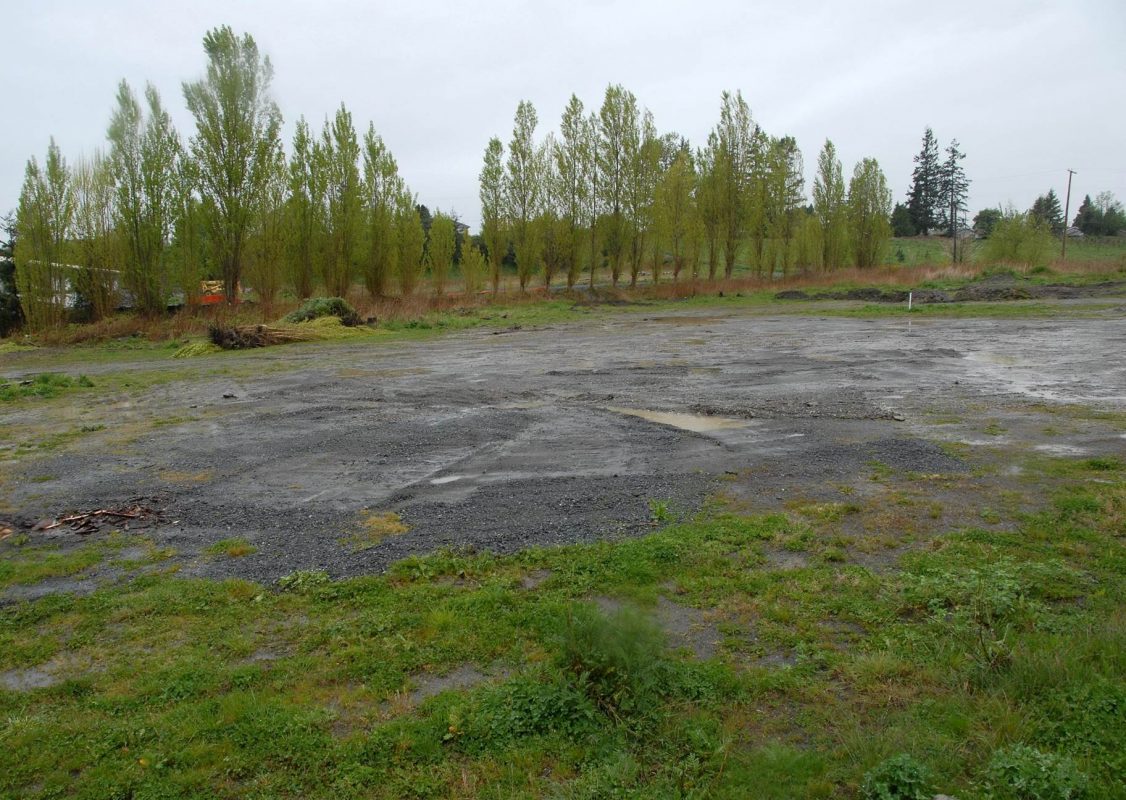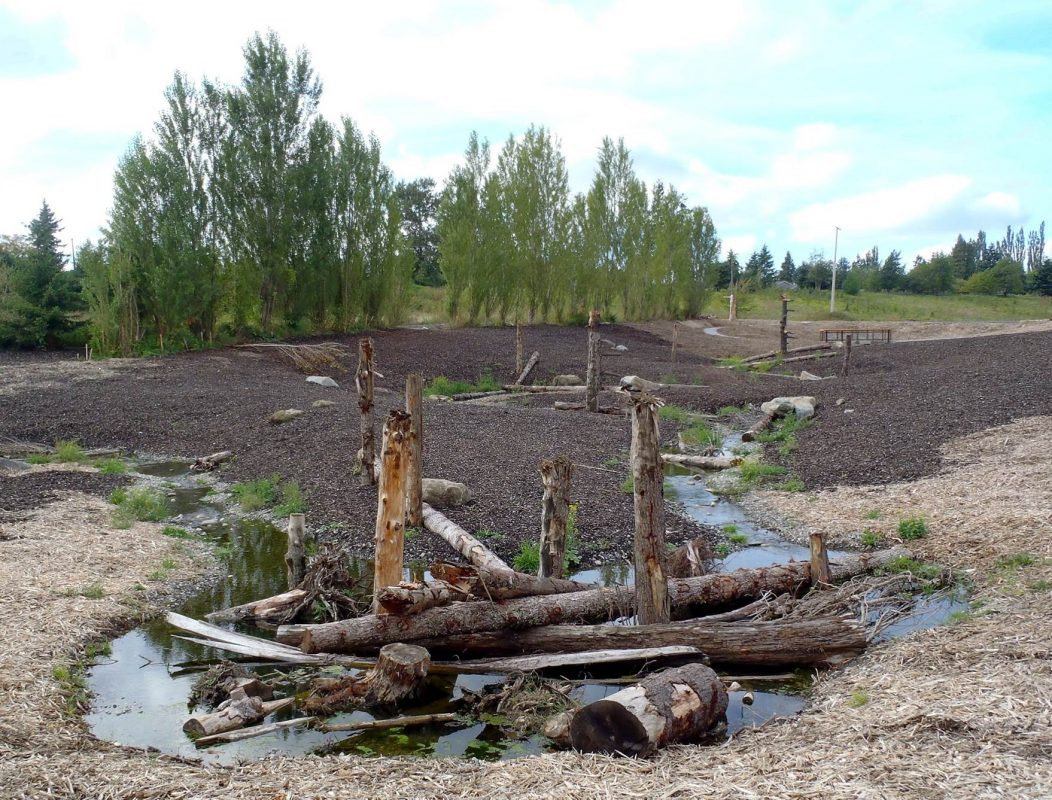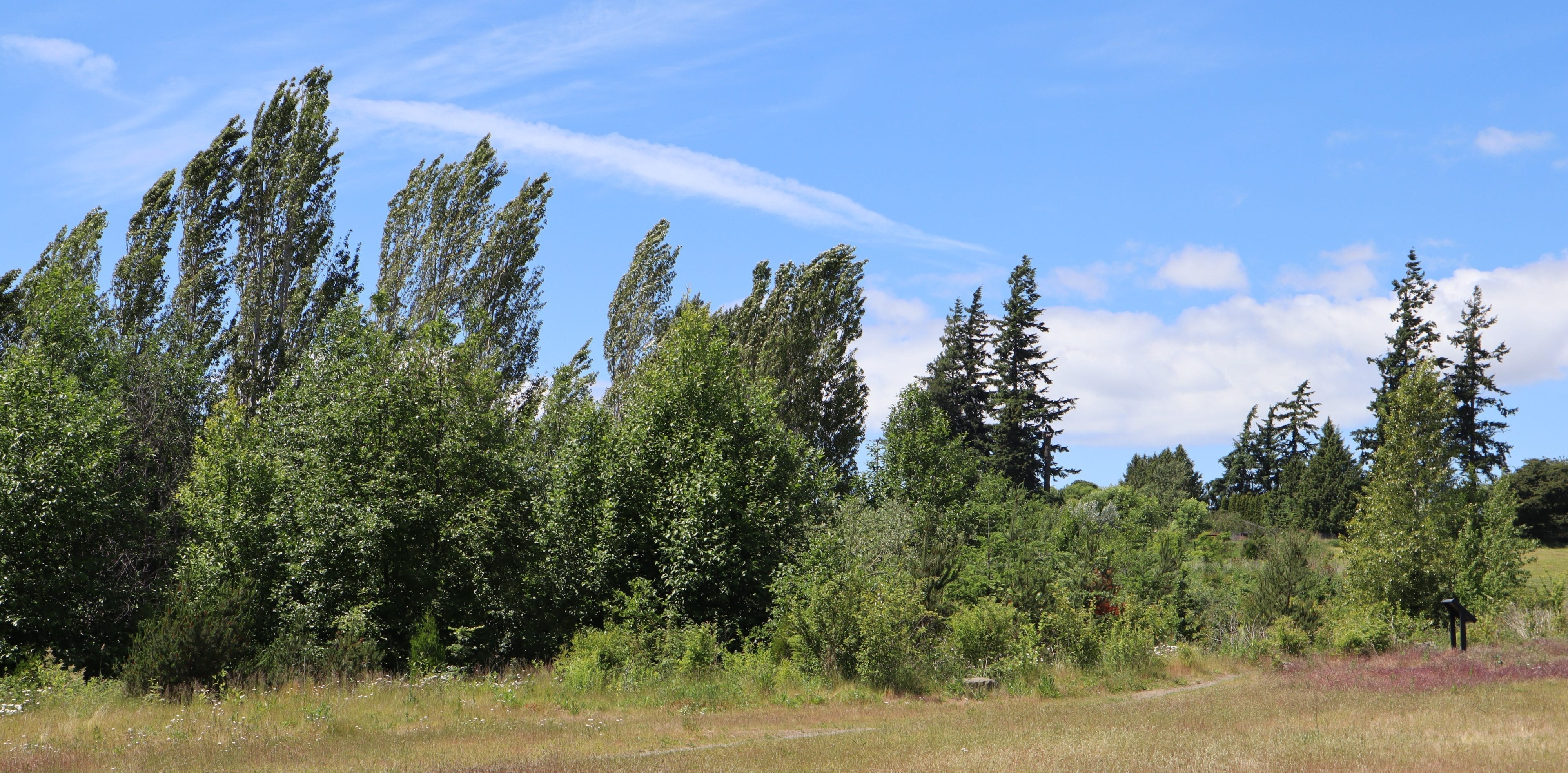Project Overview
Squalicum Creek Park once included a gravel pit, an airport, and a concrete plant. A century of development throughout the Squalicum Creek watershed resulted in poor water quality and loss of fish and wildlife habitat.

The Willow Spring project regains high-quality fish and wildlife habitat in the Squalicum Creek watershed through the construction of the Willow Spring channel and associated wetlands along the western edge of Squalicum Creek Park. Willow Spring is an off-channel habitat that provides a place for salmon to grow, feed, and rest during their long journey between Squalicum Creek and the ocean.
The Willow Spring channel was constructed in 2010 but was not immediately connected to Squalicum Creek because of landowner constraints. The connection between Willow Spring and Squalicum Creek was created upon the completion of the final phase of the project in fall 2018.
2018 Final Phase
During the construction of the Willow Spring channel in 2010, the City was unable to connect the channel with Squalicum Creek due to BNSF Railway landowner constraints. In 2015, the City permitted the remaining project actions to improve fish access and habitat conditions but was again unable to construct the project due to continued BNSF Railway landowner constraints. The City secured BNSF approval in September 2018, thus allowing construction of the final connection.
In fall 2018, the City constructed the remaining elements of this project to improve fish passage between Squalicum Creek and the Willow Spring channel. Construction included replacing an existing 12-inch culvert and artificial pond with a new open channel that connects the existing Willow Spring channel with Squalicum Creek.


Willow Spring connection site before 2018 construction (top image) and after construction (bottom image).
2010 Channel Creation
In 2010, the City completed the first phase of the Willow Spring project by creating approximately 1,000 lineal feet of new stream for off-channel salmon rearing habitat and refuge, nearly 1/3 of an acre of new wetlands, and nearly 1.5 acres of riparian (stream-side) forest. This project added key components found in productive salmon stream habitat including meandering bends, large woody debris, pools, and riffles.
Partners that helped with planting during construction include the Bellingham Parks Volunteer Program, Nooksack Salmon Enhancement Association, Transition Whatcom, REI, and City-sponsored Washington Conservation Corps (WCC) crews.


Willow Spring site before 2010 construction (top image) and after construction of the off-channel habitat (bottom image).

2019 photo of Willow Spring site from Squalicum Creek Park.
Additional Information
- Willow Spring sign at Squalicum Creek Park (PDF)
- Feasibility Study for Groundwater availability for Willow Spring Creek Creation at Squalicum Creek Park, October 2006 (PDF)
- Willow Spring Capital Project page (PDF)
Project Manager: Analiese Burns, Habitat and Restoration Manager, Public Works Department, Natural Resources. (360) 778-7968, acburns@cob.org
